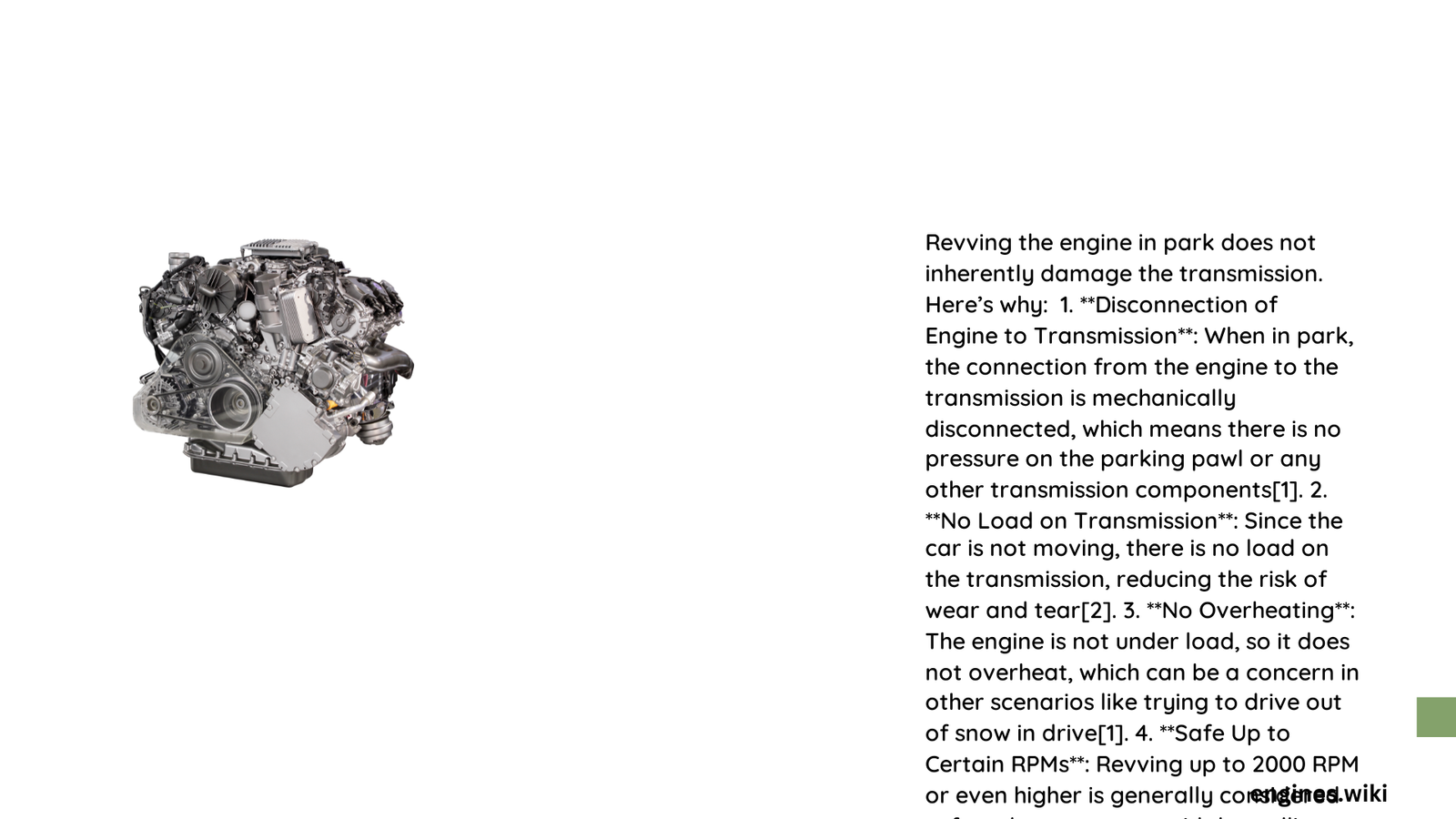Modern vehicle owners often wonder about the potential risks of engine revving while their car is in park. Understanding the mechanical interactions between engine and transmission reveals that brief engine revving typically does not cause significant damage, thanks to sophisticated automotive design and safety mechanisms that protect critical vehicle components.
What Happens When You Rev an Engine in Park?
When a vehicle is in park, several mechanical safeguards prevent transmission damage:
How Does the Transmission Protect Itself?
- Parking Pawl Mechanism: A robust mechanical lock disconnects the engine from wheel rotation
- No Direct Power Transfer: Transmission remains disengaged during park mode
- Electronic Safety Systems: Modern vehicles have built-in protection against excessive engine stress
Can High RPMs Cause Transmission Stress?
| RPM Range | Potential Risk | Transmission Impact |
|---|---|---|
| 0-2000 RPM | Minimal | No Significant Damage |
| 2000-4000 RPM | Low | Negligible Stress |
| 4000+ RPM | Moderate | Potential Unnecessary Wear |
What Mechanical Factors Prevent Transmission Damage?

Automotive engineers design transmission systems with multiple protective features:
- Mechanical Disconnection
- Parking pawl prevents wheel rotation
- Engine power cannot transfer to wheels
-
Zero load on transmission components
-
Fluid Dynamics
- No pressure buildup in transmission fluid
- No mechanical stress on internal gears
- Minimal temperature increase
Why Modern Vehicles Resist Transmission Damage?
Contemporary automotive technology incorporates advanced protection mechanisms:
- Electronic Control Units (ECUs) monitor and limit engine performance
- Sophisticated Sensor Networks detect potential mechanical stress
- Automatic Protective Interventions prevent excessive engine strain
What Should Vehicle Owners Know?
While occasional brief revving in park is generally safe, experts recommend:
- Avoid prolonged high-RPM engine running
- Ensure vehicle is properly secured
- Listen for unusual mechanical sounds
- Perform regular maintenance
Potential Risks of Excessive Revving
Although minimal, potential risks include:
- Unnecessary engine wear
- Increased fuel consumption
- Potential stress on engine mounts
- Marginal lubrication system strain
Professional Recommendations
Automotive technicians suggest:
- Keep engine revving brief and controlled
- Warm up engines gently
- Follow manufacturer’s specific guidelines
- Regular professional vehicle inspections
Technical Insights
The transmission’s park mode fundamentally prevents power transfer, creating a mechanical barrier that protects against potential damage. This design ensures that brief engine revving remains a low-risk activity for most modern vehicles.
Conclusion
Understanding your vehicle’s mechanical design helps demystify concerns about engine revving. While moderation is key, most modern vehicles are engineered to withstand occasional high-RPM moments without significant transmission stress.
